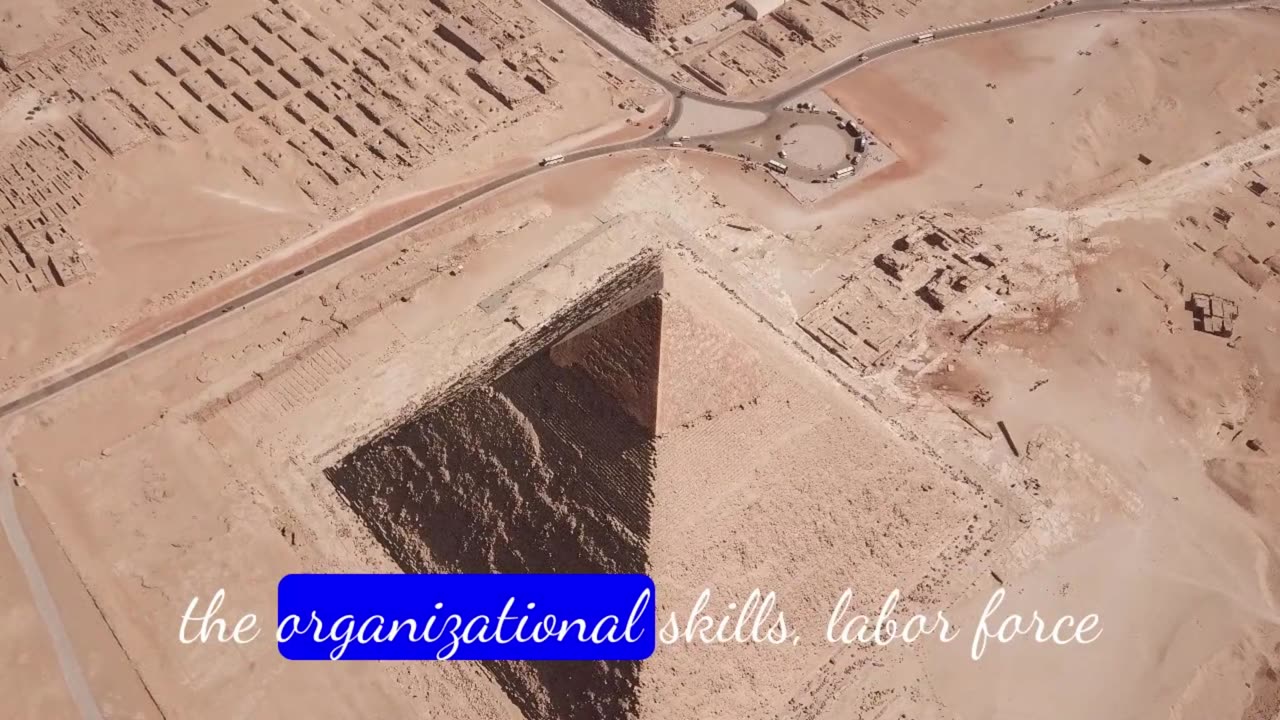Premium Only Content

Khufu and The Great Pyramid of Egypt
Khufu, also known by his Greek name Cheops, was one of ancient Egypt's most prominent pharaohs, reigning during the Old Kingdom's Fourth Dynasty, around 2589-2566 BCE. His reign is notable for several reasons, most prominently for commissioning the construction of the Great Pyramid of Giza, one of the Seven Wonders of the Ancient World.
Khufu's reign marked a zenith in Egyptian pyramid building, with the Great Pyramid standing as a testament to the architectural and engineering prowess of ancient Egypt. Here are some key aspects of Khufu's life and reign:
The Great Pyramid of Giza: Khufu's most enduring legacy is undoubtedly the Great Pyramid, which was built as his tomb and is the largest of the three pyramids on the Giza plateau near modern-day Cairo. The pyramid originally stood at an impressive height of 146.6 meters (481 feet), making it the tallest man-made structure in the world for over 3,800 years. Constructed from an estimated 2.3 million limestone blocks, the Great Pyramid is a testament to the organizational skills, labor force, and engineering knowledge of ancient Egypt.
Pyramid Complex: The Great Pyramid is part of a larger complex that includes subsidiary pyramids for Khufu's queens, mortuary temples, causeways, and boat pits. These structures reflect the elaborate funerary practices and religious beliefs of ancient Egypt, which emphasized the pharaoh's divine role and his journey to the afterlife.
Architectural Innovations: The construction of the Great Pyramid required remarkable precision and planning. Ancient Egyptians employed innovative techniques such as the use of inclined planes, ramps, and lever systems to transport and lift massive stone blocks into place. The precision of the pyramid's construction is evident in the near-perfect alignment of its sides with the cardinal points of the compass.
Legacy and Influence: Khufu's reign represents a high point in ancient Egyptian civilization, characterized by monumental architecture, centralized authority, and prosperity. The Great Pyramid continues to capture the imagination of people worldwide and serves as a symbol of Egypt's ancient glory and enduring legacy.
Controversies and Mysteries: Despite extensive research and excavation, many aspects of Khufu's life and the construction of the Great Pyramid remain shrouded in mystery. The exact methods used to build the pyramid, the role of the workforce, and the purpose of the pyramid's hidden chambers continue to be subjects of speculation and debate among scholars and archaeologists.
Cultural Significance: Khufu's reign and the construction of the Great Pyramid have left an indelible mark on Egyptian culture and identity. The pyramid remains a source of national pride and a potent symbol of Egypt's ancient heritage, drawing millions of visitors from around the world each year.
In summary, Khufu's reign and the construction of the Great Pyramid of Giza represent a remarkable chapter in human history, showcasing the ingenuity, ambition, and enduring legacy of ancient Egypt. As one of the most iconic monuments of antiquity, the Great Pyramid continues to inspire awe and fascination, serving as a testament to the timeless pursuit of greatness and immortality.
-
 LIVE
LIVE
BonginoReport
1 hour agoMore Questions Than Answers After Assassination Attempt Anniversary - Hayley Caronia (Ep.89)
13,880 watching -
 UPCOMING
UPCOMING
Donald Trump Jr.
1 hour agoHow Butler Changed Our Nation Forever, Plus My Remarks at Turning Point | TRIGGERED Ep.258
9.83K3 -
 LIVE
LIVE
The Jimmy Dore Show
1 hour agoTrump Gets RATIO’D Over Epstein Post! Israel Building Gaza Concentration Camp! w/ Adam Carolla
6,777 watching -

Dr Disrespect
8 hours ago🔴LIVE - DR DISRESPECT - PUBG - DANGEROUS
92.9K12 -
 1:12:52
1:12:52
Kim Iversen
3 hours agoTucker Calls Out Israeli Blackmail — GOP Reels Into Civil War
70.4K65 -
 57:19
57:19
Candace Show Podcast
2 hours agoTrump Gone Wild! Is Jeffrey Epstein Even Dead? | Candace Ep 215
78.4K180 -
 58:16
58:16
Redacted News
4 hours agoThe Secret Space Program IS REAL and this Whistleblower is EXPOSING all of it
32.5K137 -

Viss
8 hours ago🔴LIVE - The 5 Wins PUBG Challenge! Viss w/ Dr Disrespect
12.6K -
 1:35:04
1:35:04
vivafrei
4 hours agoTrump Satisfied with Answers on Butler? Epstein Saga Continues! Douglass Mackey Special Guest!
151K40 -
 40:59
40:59
Kimberly Guilfoyle
3 hours agoBorder Security is National Security, Live with Tyler O'Neil & Ammon Blair | Ep237
39.4K6